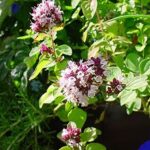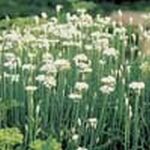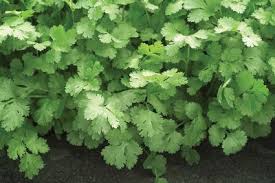Description
Coriander (Coriandrum sativum), also known as cilantro, Chinese parsley or dhania,[1] is an annual herb in the family Apiaceae. Coriander is native to regions spanning from southern Europe and North Africa to southwestern Asia.
$1.10 – $21.50
Coriander leaves All parts of the plant are edible.
Seeds/ounce – 3,000
Pkt Weight – 1/16
Coriander (Coriandrum sativum), also known as cilantro, Chinese parsley or dhania,[1] is an annual herb in the family Apiaceae. Coriander is native to regions spanning from southern Europe and North Africa to southwestern Asia.
| Options | 1 lb, 1 oz, 1/4 lb, packet |
|---|---|
| Type | Natural, Organic |

Beekeepers sometimes use lemon grass oil in swarm traps to attract swarms. Lemon grass oil has also been tested for its ability to repel the pestilent stable fly,[21] which bite domestic animals.
Seeds/ounce – 1,188,800
Pkt Weight – 1/16
Beekeepers sometimes use lemon grass oil in swarm traps to attract swarms. Lemon grass oil has also been tested for its ability to repel the pestilent stable fly,[21] which bite domestic animals.
Seeds/ounce – 1,188,800
Pkt Weight – 1/16

Greek oregano tends to be the most savory and earthy, while Italian is milder. Greek Oregano’s flavor is hot and peppery. Its spicy yet refreshing flavor contributes to Italian, Greek, and Spanish cuisine, as well as Mexican.
Oregano is a perennial growing to 20 inches, with pink flowers and spade-shaped, olive-green leaves.
Seeds/ounce – 125,100
Pkt Weight – 1/128
Greek oregano tends to be the most savory and earthy, while Italian is milder. Greek Oregano’s flavor is hot and peppery. Its spicy yet refreshing flavor contributes to Italian, Greek, and Spanish cuisine, as well as Mexican.
Oregano is a perennial growing to 20 inches, with pink flowers and spade-shaped, olive-green leaves.
Seeds/ounce – 125,100
Pkt Weight – 1/128

Both leaves and the stalks of the flowers are used as a flavoring in a similar way to chives.
Seeds/ounce – 8,000
Pkt Weight – 1/28
Both leaves and the stalks of the flowers are used as a flavoring in a similar way to chives.
Seeds/ounce – 8,000
Pkt Weight – 1/28

Here are additional ways in which German Chamomile can help:
Physical uses: Inflamed muscles and joints, infections, headaches, indigestion, nerve pain.
Skincare uses: Inflammation, irritations, rashes, allergic reactions, acne, rosacea, sunburn, itching, small cuts, minor burns, minor skin infections, insect bites, and stings.
Psychological uses: Stress, tension, anxiety, anger, fear, sleeplessness, impatience.
Approximately 189,000 per ounce Pkt about 1000
Here are additional ways in which German Chamomile can help:
Physical uses: Inflamed muscles and joints, infections, headaches, indigestion, nerve pain.
Skincare uses: Inflammation, irritations, rashes, allergic reactions, acne, rosacea, sunburn, itching, small cuts, minor burns, minor skin infections, insect bites, and stings.
Psychological uses: Stress, tension, anxiety, anger, fear, sleeplessness, impatience.
Approximately 189,000 per ounce Pkt about 1000


Reviews
There are no reviews yet.